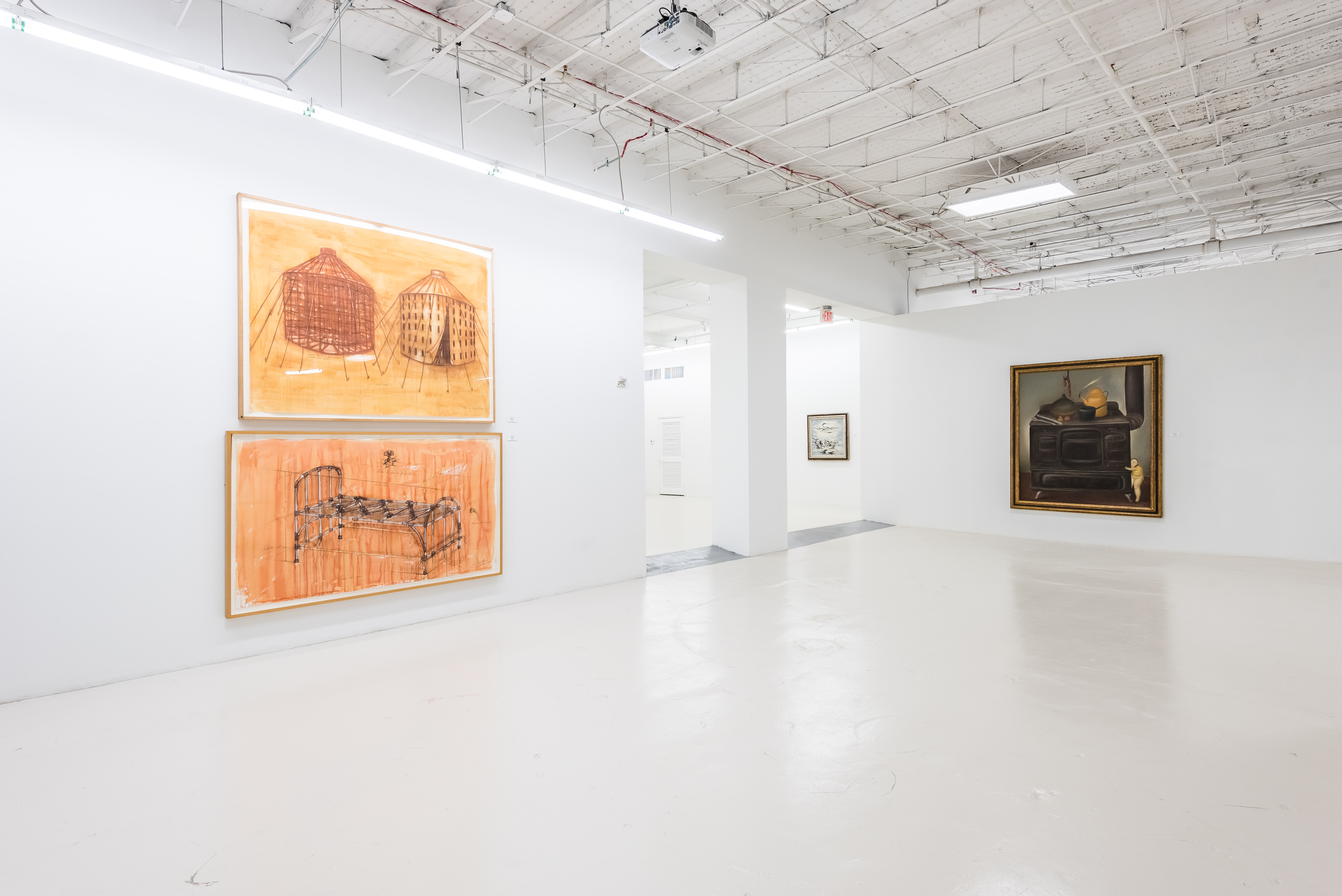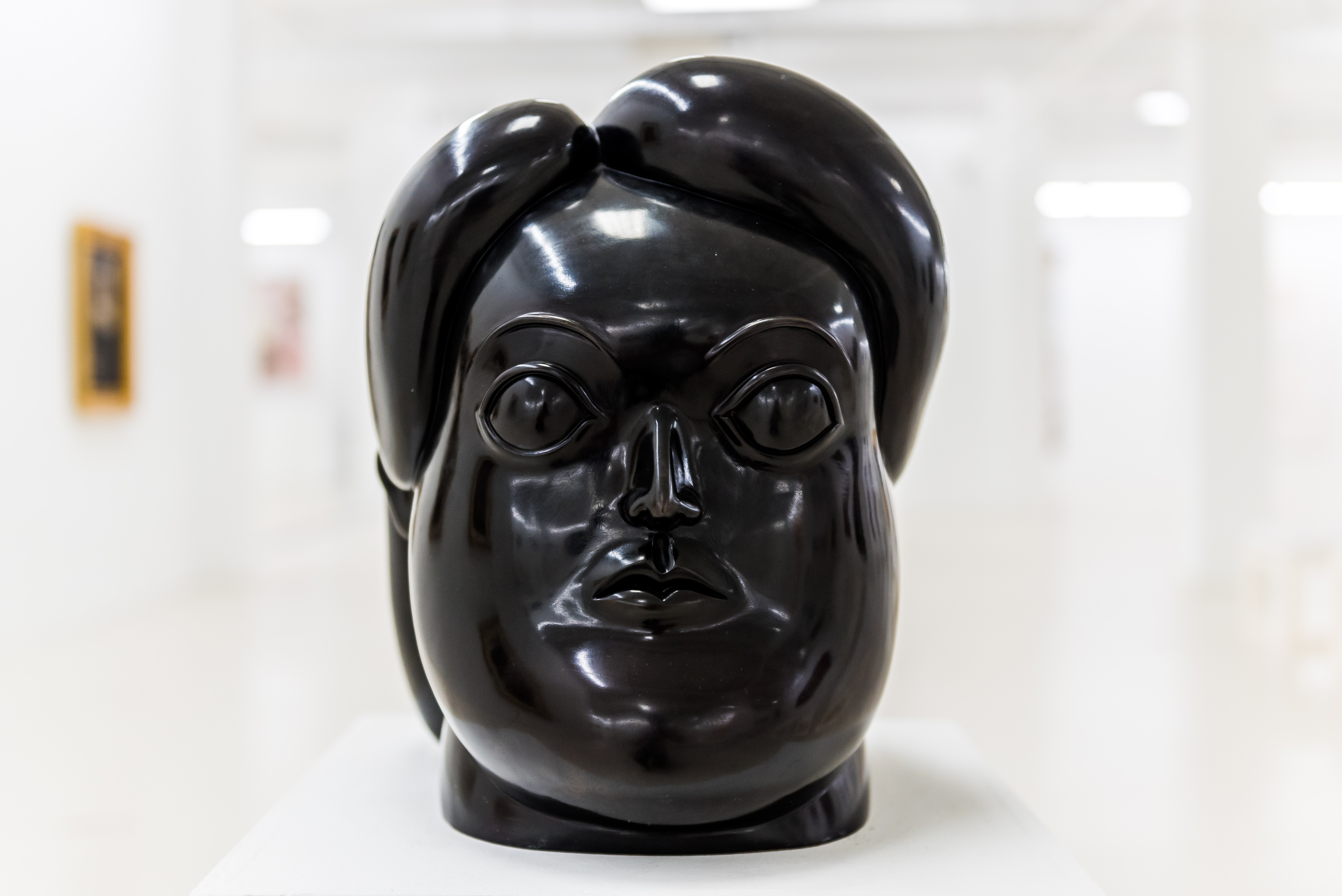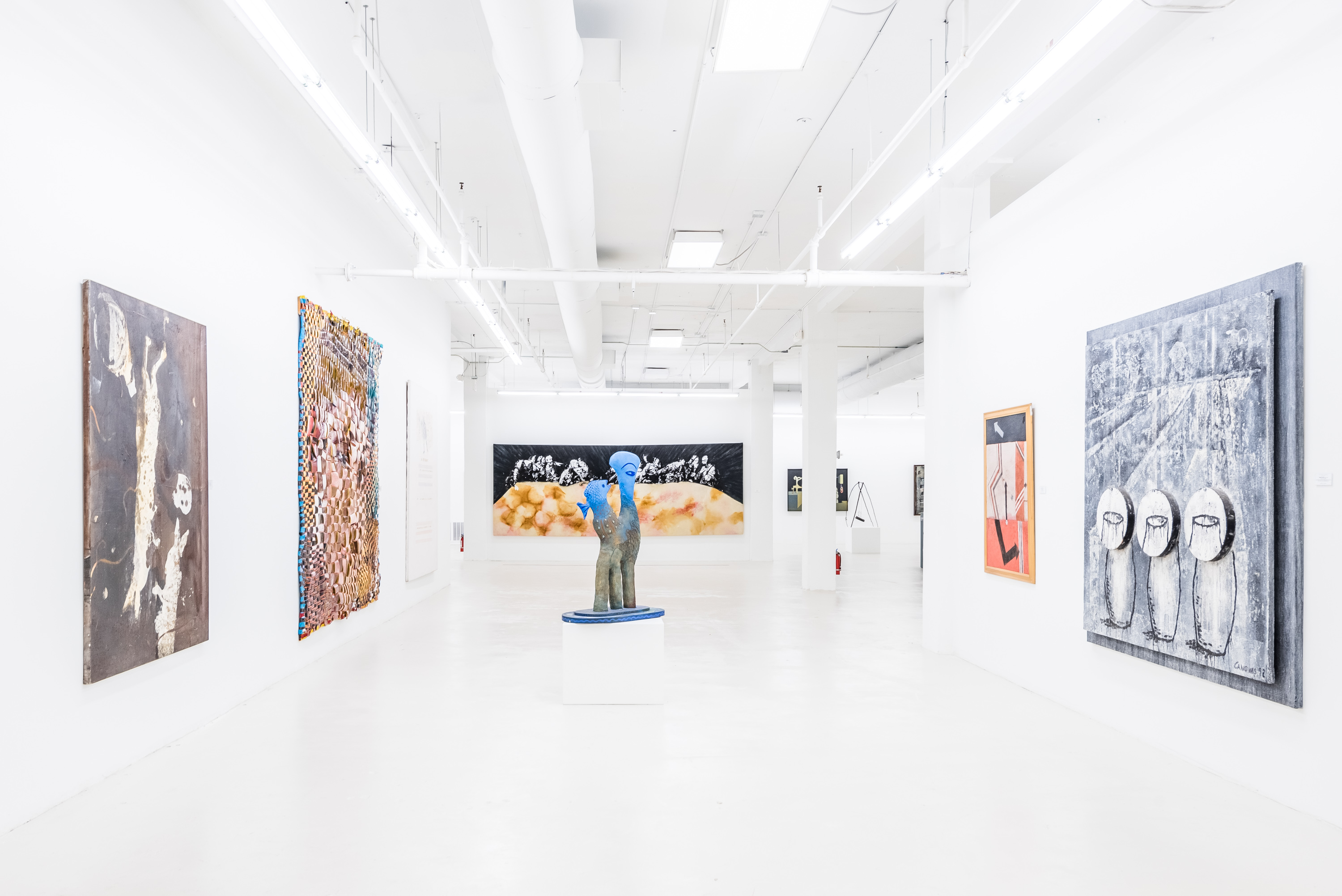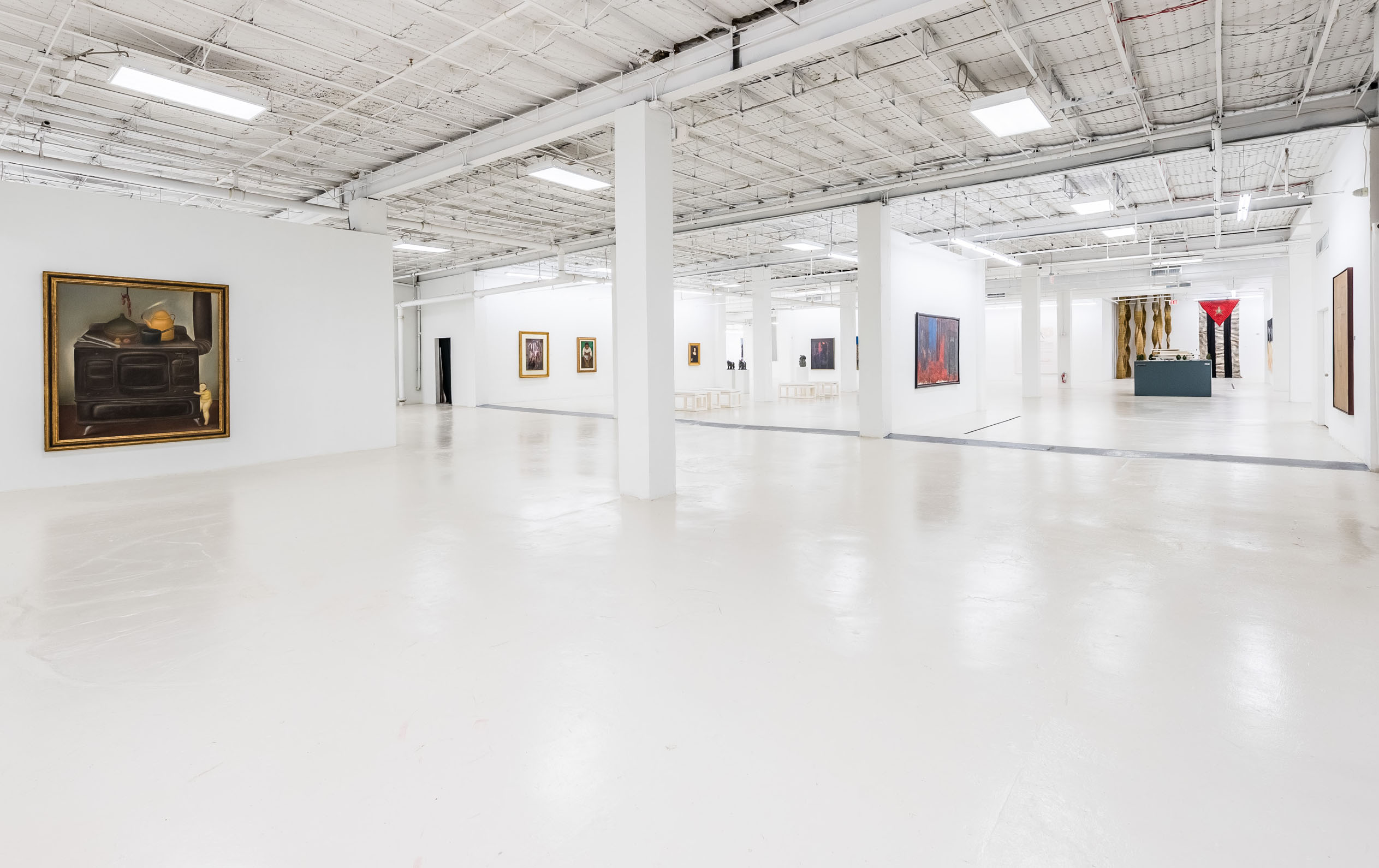N A M L A

OUR MISSION
The Nader Art Museum Latin America (NAMLA) with one of the most important modern and contemporary collection from Latin America, the Caribbean, and the diaspora introduces Gary Nader’s vision for a dynamic cultural center in the United States. The NAMLA with 30,000 sq. ft. of exhibition space comprises four exhibition rooms presenting comprehensive exhibitions of works in all media – painting, sculpture, works on paper, photography, and video – in a space dedicated to showcasing the global importance of the art of Latin America and the Caribbean. With The Nader Family Collection of over 1200 works from 190+ artists to anchor the programs, the museum will offer innovative exhibitions, music, conferences, films, rooms for traveling exhibitions of worldwide importance and other projects to bring appreciation to the immense cultural significance of Latin America.

ABOUT
The Nader Art Museum works as a dynamic cultural center continuously presenting exhibitions, films, music, with an active and engaging educational program of lectures by prominent art critics aimed to attract permanent members as well as stimulate the art appreciation in the community. Hundreds of thousands of visitors have experienced the museum collection and diverse programs since it opened in 2014.
The artists represented include the masters of the modern era and the creations of mid-career artists that will demonstrate conclusively that Latin America is, and has been, a major part of a global history of art and that this great cosmopolitan city of Miami is a perfect location to celebrate its significance. After more than 40 years expanding global understanding of Latin American Art, The Nader Family Collection has become one of the most comprehensive of its class showcasing works of art by major Latin American artists .
THE COLLECTION

Carol Damian, Ph.D.
Today, after years of neglect and lack of understanding, the art of modern Latin America is now realized to be significant to the global phenomenon that defines an international art world, and representative of the true vitality, originality, hybridization, and diversity that mark each and every country in this wide geographical region. While the art of Latin American relates quite closely to its social and political context, in a volatile landscape of coups, intrigue, and constant search for identity that goes back hundreds of years, the dependence of art and literature as expressions of cultural solidarity results in unique forms of creativity that transcend borders and divisiveness. When describing the art of modern Latin America (from the vanguard movements of the early 20th through the emergent and avant-garde of the 21st centuries), simplistic lines of demarcation into geographical regions has long been the best approach to an organization of the many styles, trends, and artistic practices representative of the national consciousness of a vast area. This is because there is no over-riding concept that can be used to either generalize or organize years of artistic production in so historically and politically complex an environment. The Spanish-speaking regions of North, Central, and South America, together with the Caribbean islands, with their many languages and own unique histories, and finally, Brazil, the Portuguese-speaking part of South America, also with its own historical construct, create the basis for a discussion of Latin American art – and already suggest a confusing array of territories, with not even language in common. These regions can be classified culturally in different ways, but none are wholly satisfactory. There can be references to indigenous peoples, slavery, foreign institutional dominance, and religion (the majority are Catholic), but it is the hybridization over time that makes each area distinct.
It is in The Nader Family Collection remarkably complete collection of Latin American, South American and Caribbean Art, from Mexico to Brazil, large countries to small islands, that the trends, styles, social and political concepts and essential paradigms may be understood and experienced. The collection affords the audience the opportunity to explore Latin American art through the lens of time and place, in and out of its ties to European and North American modernism and understand each stylistic category as representative of a nation as much as the international art world. It also tells the story of these complex territories through images that range from traditional and academic, regional to global. While the beginnings of Latin America’s distinctive art trajectory must often be located in Pre-Columbian and Colonial artifacts, this collection begins in the modern world, but there are often references to the historical past that cannot be ignored and add to the unique methods of creativity associated with many parts of the territory. The indigenismo and costumbrista movements that had far-reaching influences also reveal the social, cultural, and political significance of the art produced throughout the early years of the twentieth century and assisted in bringing the art of Latin America beyond the “exotic” to more universal associations and experiences. A few examples, highlights that recognize significant artists, provide a good introduction to the vast amount of works in the collection, that are perhaps best organized from the starting points of its original people and early colonizers, followed by the new classes that arose out of independence and the African slaves so important to economic prosperity.
Pedro Figari (Uruguay 1861-1938) explored a wide range of subjects, from the bourgeoisie, Creole, and Afro-American in works that are meant to be as nostalgic as they are memorable while they celebrate everyday objective reality, as in his Sale la procesion. In the work Las Manos de la Esperanza (The Hands of Hope), 1970, Oswaldo Guayasamin (Ecuador 1919-1999) brings the subject of his people into a political context, an extension of the indigenismo movement begun in Mexico with Diego Rivera (Mexico 1886-1957), known not only for his extraordinary mural projects, but for his touching portraits and the images of his friends and family, most notable in El Amigo de Frida (Friend of Frida), 1931. These artists were concerned with the plight of humanity and intended to instill pride in the indigenous peoples. Images of oppression and pain prevail in their works, and modernism is greeted by the harsh truth, with abstraction the new key to expression. Modernism also took root in Cuba, where a socio-economic situation in the 1920s led to a revival of Cuban nationalism, despite repressive politics, as a mirror to the situation. Victor Manuel (Cuba 1890-1969), painted Young Man by River, ca.1950; Fidelio Ponce de Leon (Cuba 1912-1986), created Joven con Paloma (Youth with Dove), 1937, and with Carlos Enriguez (Cuba 1901-1957) they represent the vanguard artists moving away from the past into a more expressive present. Travel to Europe also brought avant-garde opportunities to artists seeking an abstract methodology, with the newest of Cubist techniques, evident in the work of Amelia Pelaez (Cuba 1896-1968) and Mario Carreño (Cuba 1913-1999), among others. Mujer, 1943, by Amelia Pelaez and Carreño’s Geometrico, 1952, demonstrate the incorporation of European stylizations into works that are still Cuban in sentiment. Meanwhile, the artists of Haiti, who experienced a Renaissance in the 1940s that continues to this day, portrayed the people and places as tropical, beautiful, and joyful in their natural environment. Jean Baptiste-Jean (Haiti b.1967) and Castera Bazile (Haiti 1923-1965) are among the finest of their generation.
As the century progressed, the impact of a number of European intellectual and stylistic tendencies affected the artists of Latin America and beyond. The Nader Family Collection follows this trajectory with a wide range of significant works and categories or movements. It certainly follows the history of Western art, as artists move in international circles and respond to artistic developments beyond their homeland as active participants, enjoying the back-and-forth of ideas and actions between the continents. One of the most important movements, Surrealism, had a universal appeal and provided an escape from the world of reality into fantasy and imagination. The prominence of art of fantasy infiltrated many Latin American countries and became a dominant feature for many years, a tendency rather than a strictly formulated surrealist movement, as in Europe. It was more intuitive and lent itself well to express the region’s exotic traditions. Rufino Tamayo (Mexico 1889-1991) evoked a pre-Columbian past and the mythical traditions of his upbringing in Oaxaca in Dos Personajes (Two Persons), 1985. Roberto Matta (Chile 1912-2002) had studied in Paris and was well-acquainted with the Surrealists. He began exploring automatist techniques and used organic shapes created by an elusive layering of pouring, wiping and sponging thin glazes of color to describe his strange objects and spatial constructs. His works are considered to be some of the most important masterpieces in Latin America and in The Nader Family Collection. It includes several prints, among them a rare series of erotica, and paintings as significant as Untitled, 1946, done at the height of his surrealist career and a darkly obsessive work that introduces some of his key science-fiction-like characters suspended in black space to become ephemeral white markings. In the 1940s, Matta was part of the group of European and Latin American artists seeking to transcend the physical and the literal in their art. He was joined by Wifredo Lam (Cuba 1902-1980) who used a unique combination of abstraction (especially Cubism) and Surrealism to exploit the power of the Caribbean lore and religion as a means of communication in several works in bronze, paintings, and drawings in the collection. The collection of Lam’s works begins with a rare early portrait, Untitled 1937, that demonstrates his European education as a young man influenced by modernist abstraction. In two bronzes, Elegua, a 1976-79, L’Oseau Zombie, 1976-1979, and in paintings such as Osun, 1976-1979, the authentic manifestation of his African roots distinguished him from his contemporaries, and he still remains the iconic personality who produced the most elaborate form of Surrealism and “negro” spirit of expression, especially as it related to the Afro-Cuban rituals of Santería. For Manuel Mendive (Cuba b.1944-), Afro-Cuban rituals provide the sources of his imagery in the most genuine of ways while they introduce us to the entire pantheon of Yoruba orishas (deities) as they cavort together and with their earthly followers in some of the most remarkable of diverse and mixed-media compositions. The series Paños Sagrados, 2004, is included withworks such as Agua Profunda as an ideal representation of his spirit world. The Surrealist motivation behind the work of Agustin Fernandez (Cuba 1928-2006), who also spent formative years in Paris, evokes machine-age eroticism, evident in the many works in the collection.

As the artists of Latin America gained more confidence as independent representatives of their respective countries, their styles acquired their own identities and became reflective of not only what was occurring in Europe and New York, but of their own realities and the complexities of cultural advancement. The paintings of Armando Morales (Nicaragua b.1947) stand alone through his unique approach to painterly figuration in works that feature the female nude with its classical overtones and shadowy technique that gives each subject a mysterious and surreal countenance, as in Mujeres (Women), 1974. Other early standard bearers for the reactions against the traditional and the strictly European include Jose Luis Cuevas (Mexico b. 1934). Primarily a draughtsman, Cuevas captured what he saw around him in the rapidly growing Metropolis of Mexico City and chose as his subjects the poor, homeless, disfigured and ignored people of the streets in imaginative images of no equal in the Americas. The Nader Family Collection includes over twenty of his drawings for a complete understanding of his significance. Not surprisingly, he was part of a group of artists exploring a different form of Figuration – Neo-figuration – that included more representational subjects, encouraged by a new generation who continued to produce expressive forms of art, but in variations that ranged from Pop Art to Assemblage and Environmental. Mexico, Colombia, Venezuela and Argentina were particularly significant locations for these developments. In Colombia, a unique representational and figurative art emerged led by Enrique Grau (b.1920) and Fernando Botero (b.1932). Although seemingly different, the artists did have in common an attention to the classical past revealed anew through a type of distortion. Grau’s numerous works on paper in the collection demonstrate his method of amplification through widening of the figure, while using a strong method of chiaroscuro to obtain volume, while Botero, famous for his enlarged objects and figures, used color to achieve his familiar type of distortion, a kind of inflation that is often as humorous as it can be sarcastic. Whether it be toreadors, still life objects, art history’s famous characters, or his own self-portrait, Botero’s work can be seen in this collection through a wide variety of subjects and media, ranging from such renowned large-body sculptures as Male Torso, 1992 and Gatto, 2002, to drawings and paintings. One of his masterpieces, A Family, 1992, has become iconic for any discussion of Botero’s subject matter as it amplifies not only the physical family, but the numerous associations that come with its identification, in Colombia and beyond. It is humorous and poignant at the same time. Julio Galan (Mexico b.1958) is another artist known for his fantastic and biographical images that project as unique figurative subjects, as in Double Life(diptych), 1991, a mixed media assemblage.
Neo-figuration and its attention to reality was the pre-cursor to contemporary approaches to and revival of Hyper-realism or Photo-realism, which emerged in the 1990s as another artistic response to Abstract Expressionism, but was still modern in its minimalist approach to image-making. A painting titled Hands, 1962, by Claudio Bravo (Chile 1936-2011) and the many works in the collection by Guillermo Munoz-Vera (Chile b.1949) are seductive reproductions of reality that force the viewer to question how they could be created so accurately. Julio Larraz (Cuba b. 1944) employs some of the same methods to capture reality, but his subjects are always dominated by a narrative, often subtle. Artists have always been interested in creating a window into the world and over the years this remains true – under different circumstances and with different motivations from the past. Walter Goldfarb (Brazil b.1964) painted Rapunzel and the Manipulatoris Milk, 2004 and After Vermeer and Cornelis van Haarlen, 2004, with embroidery, charcoal, tempera, and oil pastel on raw canvas for a remarkable commentary on iconic imagery drawn from Art History. His numerous works in the collection are a testament to artistic ingenuity and the use of non-traditional materials, or once-traditional materials, that is typical of Brazilian artists who have long been aware of their environment and use such things as oil and charcoal as a commentary on the demise of natural resources.
Another key response to the many movements and “isms” that emerged in New York in the 1940s and changed the path of art is Abstraction, and in Latin America, Geometric Abstraction provided not only a way to be part of the mainstream in Europe and America, it was also the ideal art form to withstand the many repressive political regimes, in Argentina and Venezuela especially. Geometric Abstraction was an experiment that worked: it was not a vehicle for political messages or censorship. Geometric Abstraction took many forms and used a variety of media, including light and kinetic movements. An avant-garde appeared in a number of countries and Abstraction dominated by the late 1940s and persists today, often led by a Constructivist and Conceptual attitude toward the production of art. Many of the Geometric Abstractionists escaped their countries to settle in Paris where they could freely explore and be a part of the Kinetic Art Movement and other experimental groups. In two works by Carlos Cruz Diez (Venezuela b. 1923), Couleur Additive No 110, 1974 and Physichromie 2150, 1984, the artist’s attention to color theory and geometric structure are fine examples of this style of art. He continues to work on his Physiochromies today, and has reproduced their theoretical construct in monumental public art works throughout the world. Jesus Rafael Soto (Venezuela 1923-2005) is the other well-known Venezuelan artist who used Geometric Abstraction and Kinetics in works that utilize patterns and repetitions in a linear way, as in Ambivalencia en el Espacio No.23 (Ambivalence in Space), 1981. For young artist Soraya Abu Naba’a (Dominican Republic) a methodical yet organic sense of abstraction appears in such works as Between then and now, 2012. Victor Chab (Argentina b.1930) uses collage to enhance the patterns and designs in El Viajero Imaginario (The Imaginary Journey), 1992.
A more informal approach to Abstraction occurs simultaneously in many regions of Latin America that involves figurative distortion and painterly techniques, often reflective of the main international movements of the time. While Abstract Expressionism, which dominated New York for many years, was not particularly favored (perhaps too much association with Yankee Imperialism?), many artists experimented with painting and mixed media to create their own versions of spontaneous and energetic works. Rafael Soriano (Cuba 1923- 2015), and Fernando de Szyszlo (Peru b.1925) are major proponents of this approach as they transform their subjects into mysterious layers of color. When younger artists explore the different means of Abstraction in their approach to painting and new imagery, the variety of material techniques becomes obvious, and the more contemporary works in the collection, also from other parts of the world in addition to Latin America, demonstrate the breadth of subjects, styles, media and technique that have become part of the mainstream. The Cuban artist Carlos Quintana (Cuba b.1966) is strong on process and his works combine painting and drawing for dramatic and provocative effects. For Alexis Leyva Machado Kcho (Cuba b.1970), the bronze Columpio, 2000, is but one example of his unique approach to object-making. For Tony Capellan (Dominican Republic b.1955), sandals and nails are the source for his Untitledinstallation of 2002. By the end of the twentieth and beginning of the twenty-first centuries, many artists from Latin America and the Caribbean have been recognized as international, without the label of their countries being necessary as they prove their ability to compete on a global stage. Guillermo Kuitca (Argentina b. 1961) has established himself beyond Argentina, especially in Europe, for provocative woks that address issues of the historical past and present. His Mexican Banquet, 1988, is a comment on the impact of economic reality in all its absurdity as inflation rules and debt grows in Mexico. There seem to be no limits on the imaginations of artists in the use of materials, whether they be of found objects or the more traditional. Nicolas Leiva (Argentina b.1958) works in drawing, painting and ceramics, easily adapting his energetic linear style to all.
The aforementioned artists and works are only highlights. There are also photographs, drawings and prints. The prominence of Botero’s monumental sculptures are joined by works by renowned sculptors Pablo Atchugarry (Uruguay b.1954); Carlos Alfonzo (Cuba 1950-91); Agustin Cardenas (Cuba 1927-2001), and Hernan Dompe (Argentina b.1946). The Nader Family Collection is representative of the most important movements of the twentieth and twenty-first centuries in Latin America and the Caribbean. It is a comprehensive group of works that marks the significance of the Art of Latin America and the Caribbean on the global stage.
Carol Damian, Ph.D.
____________________
i Edward Lucie-Smith, Latin American Art of the Twentieth Century (London: Thames and Hudson, 1993), 9.
ii Jacqueline Barnitz, Twentieth-Century Latin American Art (Austin: University of Texas Press, 2001), 121-22.